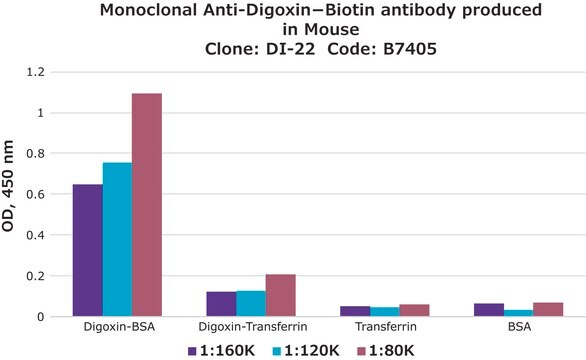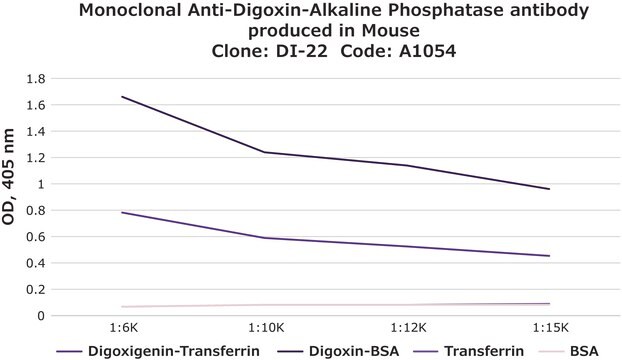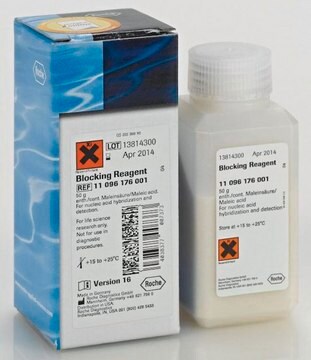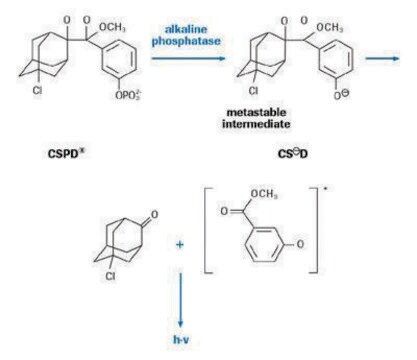11214667001
Roche
Anti-Digoxigenin, Fab fragments
from sheep
Sinonimo/i:
anti-digoxigenin, digoxigenin
About This Item
Origine biologica
sheep
Livello qualitativo
Coniugato
unconjugated
Forma dell’anticorpo
affinity purified immunoglobulin
Tipo di anticorpo
primary antibodies
Clone
polyclonal
Forma fisica
lyophilized
Confezionamento
pkg of 1 mg
Produttore/marchio commerciale
Roche
tecniche
ELISA: 2-4 μg/mL
immunohistochemistry: 0.5-1 μg/mL
western blot: 0.5-2 μg/mL
Isotipo
IgG1
Temperatura di conservazione
2-8°C
Categorie correlate
Descrizione generale
Specificità
Applicazioni
Use Anti-Digoxigenin, Fab fragments for the detection of digoxigenin-labeled compounds using:
- ELISA
- Immunohistocytochemistry
- In situ hybridization
- Western blot
- Flow cell construction.
Caratteristiche e vantaggi
Sequenza
Nota sulla preparazione
- ELISA: 2 to 4 μg/ml
- Immunohistocytochemistry: 0.5 to 1 μg/ml
- In situ hybridization: 0.2 to 0.4 μg/ml
- Western blot: 0.5 to 2 μg/ml
Storage conditions (working solution): Diluted antibody is stable at 2 to 8 °C for 12 hours.
Always prepare freshly!
Ricostituzione
Risultati analitici
Altre note
Not finding the right product?
Try our Motore di ricerca dei prodotti.
Codice della classe di stoccaggio
11 - Combustible Solids
Classe di pericolosità dell'acqua (WGK)
WGK 1
Punto d’infiammabilità (°F)
does not flash
Punto d’infiammabilità (°C)
does not flash
Certificati d'analisi (COA)
Cerca il Certificati d'analisi (COA) digitando il numero di lotto/batch corrispondente. I numeri di lotto o di batch sono stampati sull'etichetta dei prodotti dopo la parola ‘Lotto’ o ‘Batch’.
Possiedi già questo prodotto?
I documenti relativi ai prodotti acquistati recentemente sono disponibili nell’Archivio dei documenti.
I clienti hanno visto anche
Articoli
Digoxigenin (DIG) labeling methods and kits for DNA and RNA DIG probes, random primed DNA labeling, nick translation labeling, 5’ and 3’ oligonucleotide end-labeling.
Il team dei nostri ricercatori vanta grande esperienza in tutte le aree della ricerca quali Life Science, scienza dei materiali, sintesi chimica, cromatografia, discipline analitiche, ecc..
Contatta l'Assistenza Tecnica.






